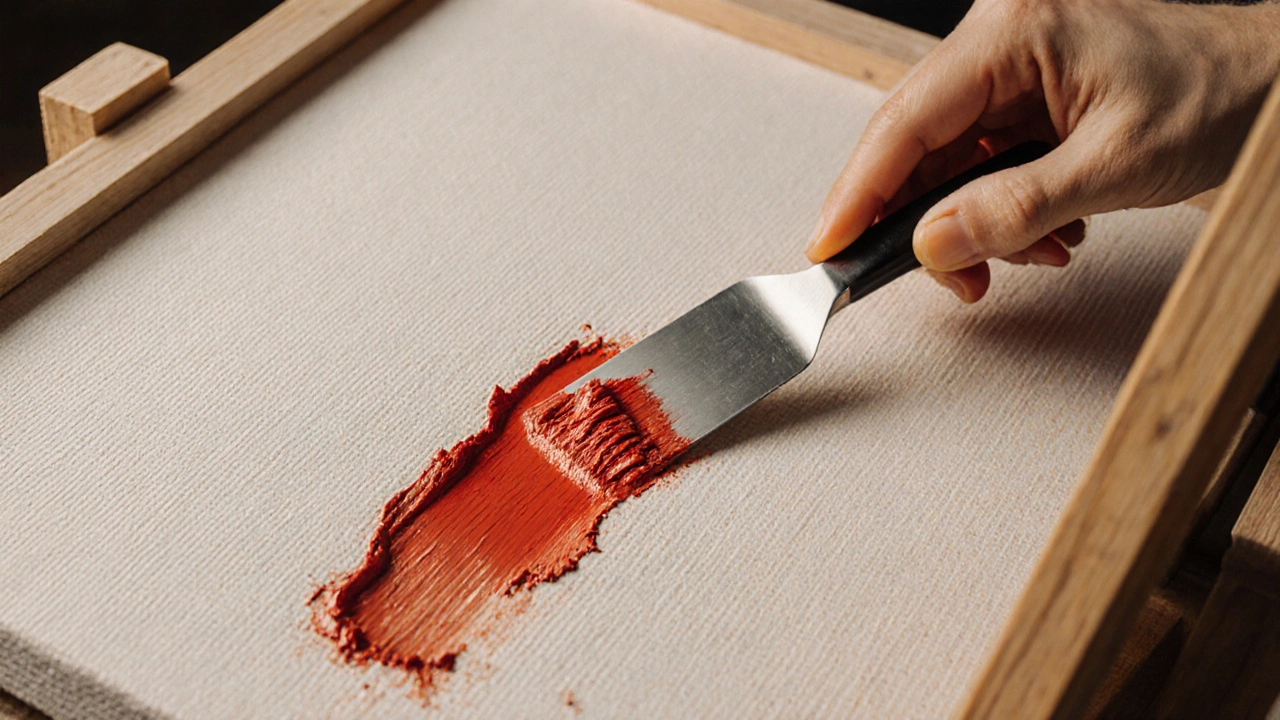Spatula Technique – The Art of Textured Painting
When working with spatula technique, a method that uses a flat tool to spread, shape, and sculpt paint directly on the surface. Also known as palette knife painting, it lets artists skip the brush for bold, tactile effects. Spatula technique connects to impasto, the practice of applying thick layers of paint to create three‑dimensional texture and glazing, a translucent layering method that adds depth and color richness. The technique embraces texture as a visual language, letting paint act like clay. It requires oil paint or acrylic medium, a sturdy palette, and a reliable spatula that feels comfortable in the hand. By using the tool’s edge, an artist can slice, scrape, or pile paint, turning a flat canvas into a sculptural landscape. This approach not only builds physical depth but also influences light, making highlights pop and shadows recede. In short, the spatula technique offers a hands‑on way to shape mood and movement without a single brushstroke.
Why Artists Choose the Spatula Technique
The spatula technique is popular because it merges painting and sculpting, giving creators a fast route to expressive surfaces. It pairs well with oil paint, a slow‑drying medium that stays workable long enough for blending and layering, but it also works with fast‑drying acrylics when mixed with a retardant. Artists often add a medium like linseed oil or a gel to increase flow, then use the spatula to drag the mixture across the canvas, creating streaks or knife‑edge lines. The technique supports other methods such as scumbling, where a thin, opaque layer is brushed over a dried underpainting, adding texture contrasts. By combining impasto with glazing, a painter can achieve depth that looks almost photographic, especially when light catches the ridges. The method also encourages spontaneity: a quick swipe can suggest a wave, a rock, or a burst of color, making it a favorite for plein‑air painters who need to capture mood fast. Moreover, the tactile experience of pressing the spatula into paint often sparks fresh ideas, as the tool’s resistance guides the artist’s hand.
Beyond the tools, the spatula technique influences how a piece is presented. Thick, textured works demand sturdy stretcher bars and sometimes a protective varnish to seal the surface. Galleries often highlight these pieces because the texture adds a physical presence that draws viewers in. For collectors, the technique can increase a painting’s perceived value, especially when the artist masterfully balances bold impasto with subtle glazing. Whether you’re a beginner testing the waters or a seasoned painter looking to add texture to a new series, mastering the spatula technique opens up a world of possibilities. Below you’ll find articles that dive into canvas choices, oil paint activation, brightening dull works, and more—each offering practical tips that complement the textured approach and help you unleash the full potential of your art.
